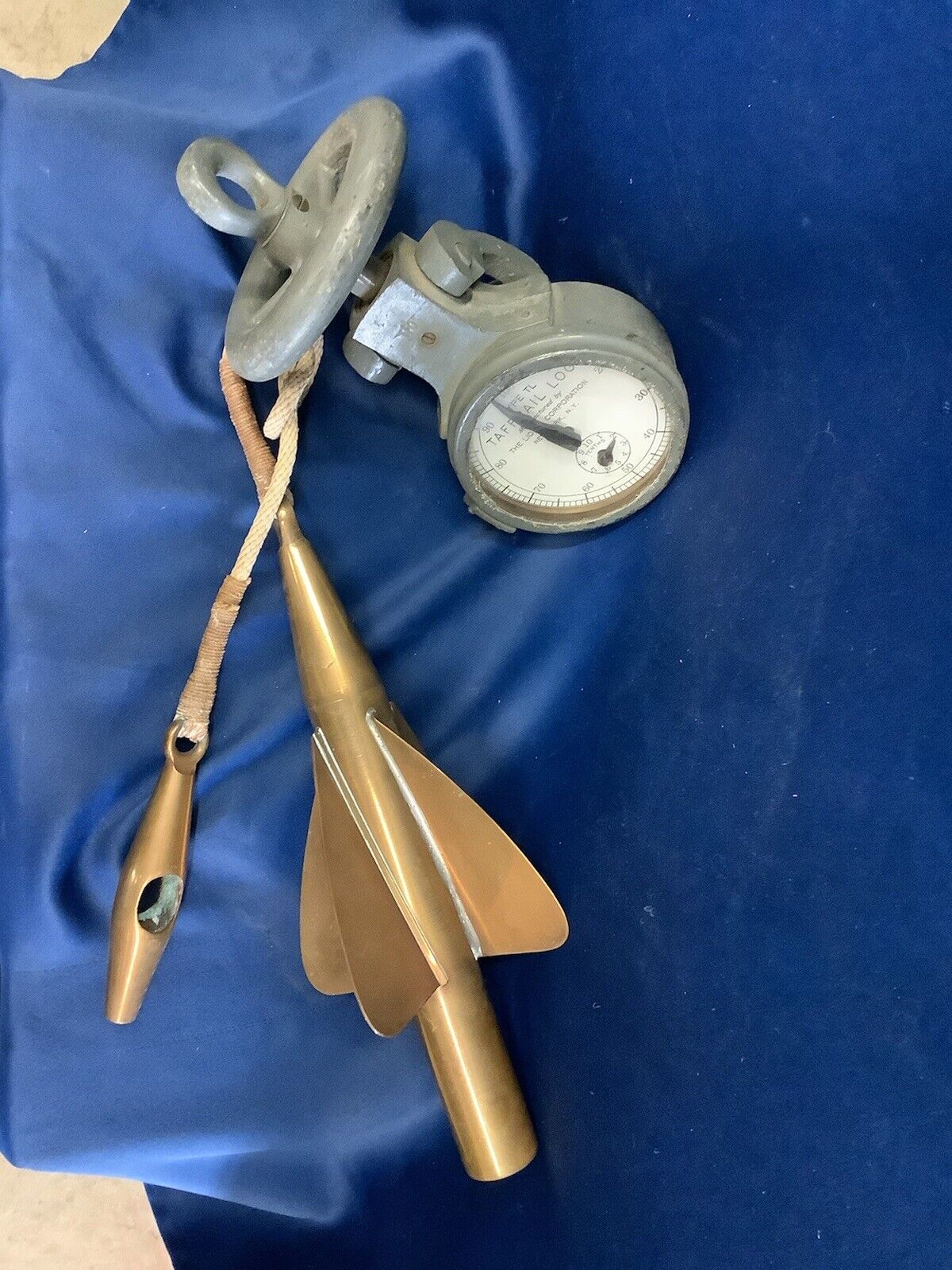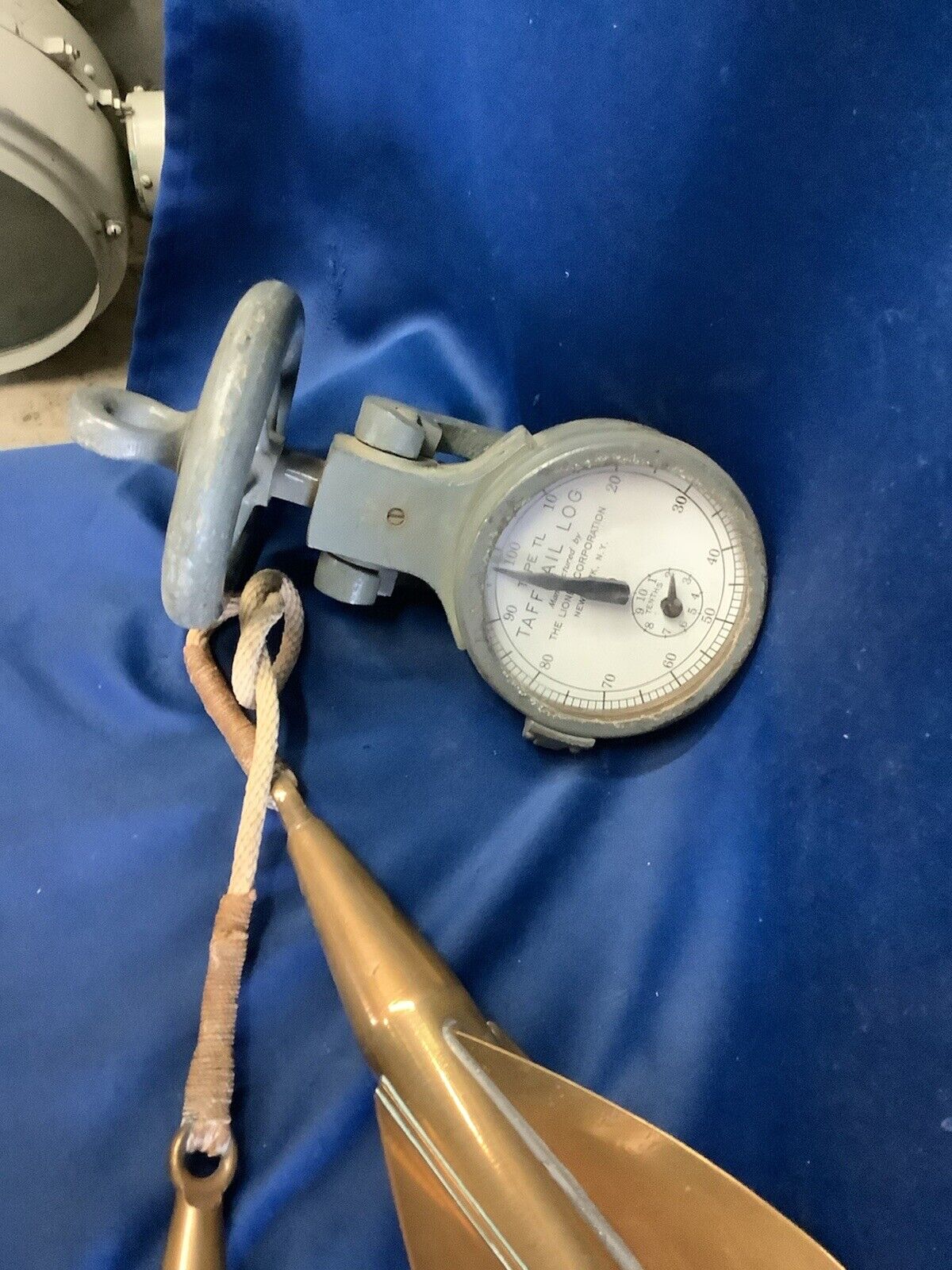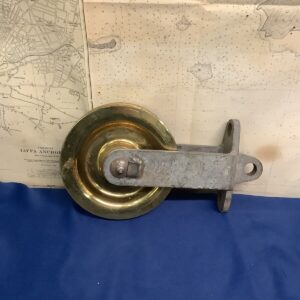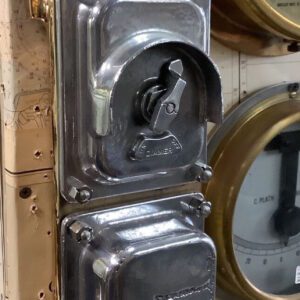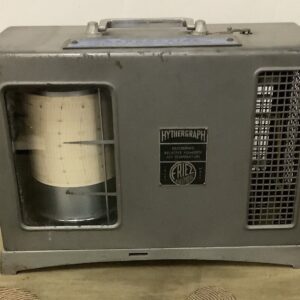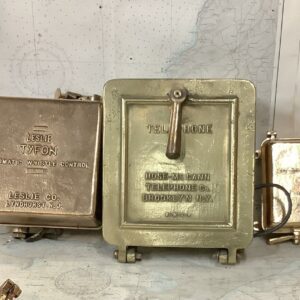U.S. NAVY WW2 Taffrail Log With Original Navy Grey Paint.
While traveling at sea, sailors need to know how fast their ship is traveling. Unlike cars which use speedometers, up until the second half of the 20th century, ships calculated their speed through the use of a nautical instrument known as a log. As years went by, the various improvements resulted in slight changes to the name of the instrument, however, they all had the same basic functions.
This type of log is known as a taffrail log. The taffrail is the aftermost railing around the stern of a ship, to which a log could be mounted with a clamping mechanism (thus resulting in the name taffrail log). These instruments were mechanical and torpedo-shaped, and were dragged from the stern of a ship in order to determine the vessel’s speed through the water. The taffrail log consists of a propeller, or rotator, with four vanes, a reading dial, and a stiff braided line that connects the two parts. As the propeller rotates, it exerts torque on the braided line, which the dial in turn registers. Knots are the unit of measurement for nautical speed, with one knot being equal to one nautical mile per hour. On the taffrail log, knots are shown in two ways: knots, and tenths of a knot. Using this method, a ship’s speed could be calculated over distances of up to 100 miles.

